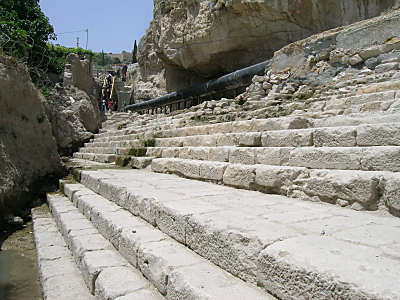Archaeology can tell us a lot about the world of first century Palestine, where Jesus lived, and this is a great help in understanding the New Testament. But can it tell us much about one of the most basic questions of all: are the New Testament gospels accurate accounts of Jesus’ life, based on eyewitnesses?
It turns out that it can at least tell us something, especially about the gospel of John.
Recent archaeological discoveries have suggested that the gospel is indeed based on accurate memories of an eyewitness, because the author accurately mentions details of several locations in and around Jerusalem that had been destroyed years before. Only an eyewitness could have known these details.
Examples of the archaeological discoveries include:
- John 5:2 mentions a pool with five porticos, named Bethzatha (or Bethesda), and located near a gate in the city wall called the Sheep Gate. For a long time the existence of the pool, and the five porticos was doubted, but the pool, its five porticos and its location near the Sheep Gate have now all been confirmed.
- John 19:13 describes the Roman Prefect, Pilate, passing judgment on Jesus at a location known as the stone pavement. It appears it has now been discovered – not a stone paved area as originally thought but an area primarily on bedrock.
- In John 9:1-9 Jesus heals a blind man by telling him to wash in the Pool of Siloam in Jerusalem. The pool has been discovered.

Of course this doesn’t prove the accuracy of all the events and sayings in John, but it gives us more reason to trust John has remembered what he heard, even if (as the scholars tell us) he has put many of Jesus’ teachings into his own words.
Read more detail on the archaeology in Archaeology and the truth of the Gospels